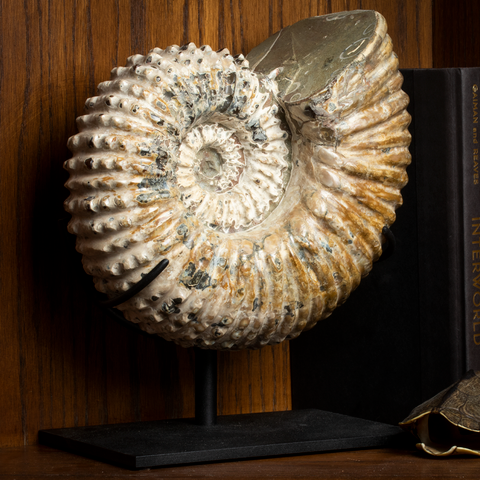Fossil Ammonite: Cleoniceras sp. Red Flash
The Science
These are excellent, hand-picked examples of Cleoniceras Ammonites from Madagascar. Ammonites from this location are unusually well-preserved, and are often filled with calcite crystals making it possible to cut them in half and polish them. The details of the spiral chambers remain, and make each one a beautiful object in its own right.
Ammonites are an extinct group of marine animals similar to the nautilus. Like the nautilus, ammonites had a soft body with tentacles that emerged from a hollow chambered shell utilized in the manner of a submarine's ballast tanks. Ammonites are often identified by their shell ornamentation and the structures of the wall that divide the shell's chambers.
The Story
Ammonites are named after the Egyptian god Amun, whose attribute (rams' horns) they were thought to resemble, and their fossils have been collected since prehistoric times. Ammonites are among the most common fossils, being plentiful in locations all over the world. They became extinct at the end of the Cretaceous period, the same time that the dinosaurs disappeared.
Individual shapes and fossils vary but your item will resemble the pictured examples.
DETAILS
SKU: FO-SL0009Dimensions: Medium: (Weight - 30-79gm)
Large:(Weight - >=80gm)
Scientific Name: Cleoniceras sp.
Origin: Madagascar
Period: Cretaceous
Age: 120 Million Years
Shipping Restrictions: None.
- Color:
- Brown
- Color:
- Orange
- Origin:
- Africa
- Impact:
- Eco-Friendly






